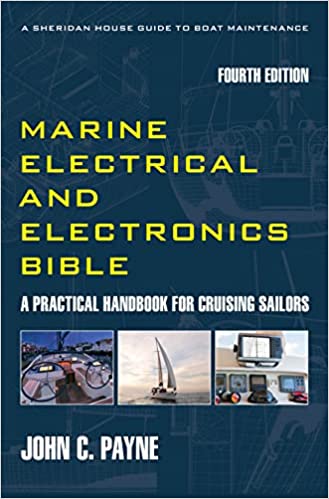Boat Electronics Installation
Proper boat electronics installation is vital for safety, performance, and longevity. Incorrect wiring, poor grounding, or substandard connections can lead to equipment failure, interference, or even fire hazards. Marine environments demand corrosion-resistant materials, waterproof enclosures, and vibration-secure mounting. Devices like GPS, VHF radios, and autopilots rely on clean power and signal integrity—compromised installs can render them unreliable when most needed. Following manufacturer guidelines, using marine-grade components, and ensuring compliance with ABYC standards help prevent costly repairs and downtime. A well-executed installation not only protects your investment but also ensures seamless integration, operational reliability, and peace of mind at sea.
Boat Electronics Installation
The characteristic misting up of instrument displays is a typical sight after winter. The best remedy is to switch on the display lighting and leave it on for several hours. It is not a lot of heat but it all helps. Your trouble free sail boat cruise starts here!
1. Check that all the aerial connections are secure. In particular check VHF connectors at the mast base, or where they are made up the mast at the aerial. If they are in poor condition visit West Marine and order new ones
2. Check that any exposed copper conductors have not deteriorated, and that crimp connections are sound. Again if they need replacing West Marine has it all.
3. Check all whip aerials (VHF, Navtex etc) for damage. I have bought my replacement aerials from West Marine, they have all the leading brands
4. Check that the GPS aerial is undamaged, and vertical if on a pushpit type support.
5. Check the autopilot socket outlets for moisture. If caps or protective covers have not been properly screwed on then corrosion may have occurred around the small pins. Clean and dry them out before use. Your trouble free sail boat cruise starts here!
6. Check gas detector operation. Sensor heads can be degraded by moisture and be ineffective. Turn on the detector and test after an hour. Ideally sensor heads should be wrapped up for the winter.
7. Operate all electronics equipment for several hours, with lights on. The heating effect of the equipment power supplies and lamps should dry out any internal condensation that can cause malfunction on circuit boards
8. Check all electronics grounds are tight and are in good condition. Your trouble free sailboat cruise starts here!
The 4th Edition of the Marine Electrical Electronics Bible Get your copy and start becoming self sufficient and save money on expensive technician callouts.Boat Electronics Installation
Incorrect installation of boat electronics can lead to a range of operational and safety issues. Common problems include power loss, signal interference, and equipment failure due to poor grounding, loose connections, or substandard wiring. Water intrusion from improperly sealed enclosures can corrode components, while voltage drops from undersized cables affect performance. Misrouted antenna cables may cause weak GPS or VHF signals, compromising navigation and communication. Overloaded circuits without proper fuse protection risk fire or system shutdown. These issues not only reduce reliability but also increase maintenance costs and safety risks. Professional installation ensures compliance, durability, and dependable operation at sea. Most systems are plug and play buy many people still ignore basic and fundamental installation rules.
Boat Electronics Installation
Software upgrades in marine electronics enhance functionality, fix bugs, and improve compatibility with new hardware. However, updates can introduce issues if not properly managed. Common problems include system crashes, loss of settings, and incompatibility with legacy devices. Interrupted updates or power loss during installation may corrupt firmware, rendering equipment unusable. Networked systems like chartplotters, autopilots, and radar require synchronized updates to avoid conflicts. Backup configurations and verifying update compatibility are essential before proceeding. Using manufacturer-approved software and following stepwise update procedures minimizes risk. Properly executed upgrades ensure reliability, while careless updates can compromise navigation, safety, and overall vessel performance.
Boat Electronics Installation
NMEA 2000 (National Marine Electronics Association) networks provide a standardized, plug-and-play communication protocol for marine electronics, allowing devices like GPS, depth sounders, engine monitors, and autopilots to share data over a single backbone. This streamlined architecture reduces wiring complexity and enhances interoperability across brands. However, improper installation can lead to persistent issues.
Common problems include voltage drops due to undersized power cables or excessive backbone length, which can cause devices to malfunction or fail to initialize. Poor termination—missing or incorrectly placed terminators—disrupts signal integrity, leading to intermittent data loss. Inadequate shielding or proximity to high-power cables may introduce electromagnetic interference, affecting sensor accuracy. Loose or corroded connectors compromise network reliability, especially in saltwater environments.
Boat Electronics Installation
Device overload is another concern; exceeding the network’s power budget without proper load balancing or isolation can cause system-wide failures. Firmware incompatibility between devices from different manufacturers may also result in communication errors or limited functionality.
To mitigate these issues, installers should follow NMEA guidelines, use certified cables and connectors, and ensure proper power distribution and termination. Regular diagnostics and voltage checks help maintain network health. A well-installed NMEA 2000 network enhances vessel safety, data accuracy, and system integration—making precision and compliance essential.
